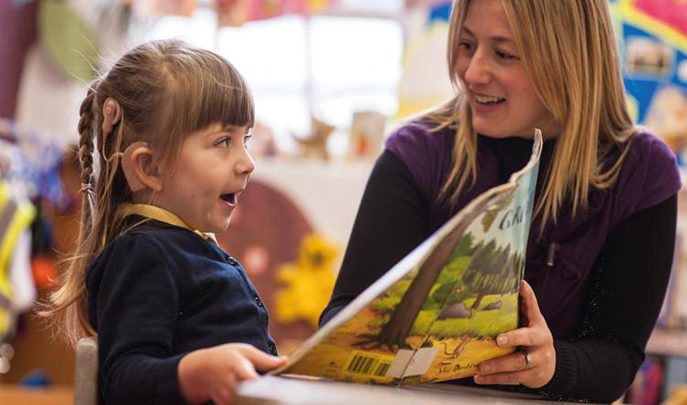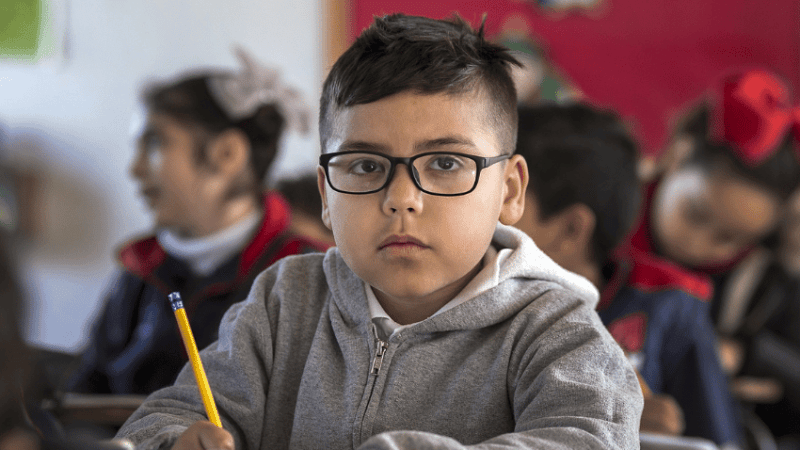Make Your School Deaf-Friendly

Note – The term ‘deaf’ is here used to refer to all levels and types of hearing loss Deafness is not a learning disability, but because so much learning occurs through listening and seeing, it can present complex challenges to school-aged children and those teaching and supporting them. With more than 45,000 permanently deaf children […]

- by Ian Noon

Note – The term ‘deaf’ is here used to refer to all levels and types of hearing loss
Deafness is not a learning disability, but because so much learning occurs through listening and seeing, it can present complex challenges to school-aged children and those teaching and supporting them.
With more than 45,000 permanently deaf children in the UK, and many more experiencing temporary deafness such as glue ear (80% of children will have experienced at least one episode of glue ear by the age of 10), all educators should be aware of these challenges and how to overcome them.
Assessing needs
Levels of deafness can range from mild to profound. Some children may be deaf in just one ear, or experience chronic but temporary deafness. Half of all deaf children are born deaf, with the other half acquiring it later in life. The age at which children with lateonset deafness are diagnosed can vary, with significant implications for their language development.
Most deaf children will communicate through spoken English, but many also communicate in sign language. Deaf children may benefit from hearing technologies, such as hearing aids and cochlear implants, to varying degrees, but it is important to remember that no technology currently exists that will enable a deaf child to hear as well as their classmates.
When a deaf child is first starting school, ensure that there is a clear process and plan in place, and that key information about the child is captured and shared among staff. As well as the information that can be obtained from health professionals, parents and the child themselves, a number of specialist assessments are available which could examine, for example, a deaf child’s skills in communication, language, listening, literacy and numeracy.
It’s particularly important to include non-verbal assessments in order to understand a deaf child’s cognitive abilities. A specialist Teacher of the Deaf can provide further advice on setting realistic, but stretching targets and outcomes for each child.
Planning and doing
Many deaf children can experience slower language development, both spoken and written, with reduced vocabulary and understanding of words and concepts. Teachers of the Deaf can advise on appropriate strategies and interventions for individual deaf children, which might include:
> Tailored and accessible language and literacy programmes, such as pragmatics and teaching grammar or phonological awareness
> Pre- and post-tutoring for new topic areas as required – pre-tutoring helps establish what the deaf child already knows and introduces new concepts ahead of the lesson, while post-tutoring reinforces key learning points from the lesson and sees if there are any areas the child didn’t understand
> Creating a good listening environment by improving classroom acoustics and reducing background noise – eg. turning off any noiseemitting devices (whiteboards, projectors) when not needed, and preventing sounds from bouncing off hard surfaces by covering them with drapes and displays
> Ensuring that hearing technologies are used effectively
A key technology for many deaf children is a radio aid, which carries the teacher’s voice via a microphone to a receiver attached to the child’s hearing aid or cochlear implant. These can mitigate some of the issues with background noise and poor acoustics, providing they are used properly. Teachers of the Deaf can advise on the steps staff should take when using one, which include ensuring that the radio aid is worn around 15cm from the mouth, and that there is no jewellery for the microphone to knock against.
Attention, memory and concentration
If a deaf child relies on lipreading and listening to understand what is being said, they can sometimes tire easily and struggle with attention and concentration. Research has found that deafness can also interfere with working memory development and a child’s ability to hold information whilst processing other tasks.
To address such issues, consider using visual cues to support your teaching points by incorporating pictures, diagrams, illustrations and objects into the lesson. You could also create specific vocabulary handouts using visual cues for specific topics.
Ensure that the pace and length of your learning sessions will give deaf children additional time to process information and check their levels of understanding after lessons. Teachers of the Deaf can provide further advice on using programmes aimed at improving working memory that are specifically deaffriendly.
Remember that no hearing technology can ‘fix’ deafness; deaf children will still struggle to pick up what others are saying through casual listening. To manage the difficulties around incidental learning that this can cause, try to organise one-to-one and small-group work activities in good listening environments so that it’s easier for deaf children to pick up on what others have said. Another useful strategy is to ensure that any video material used within the lesson is subtitled, or at least accompanied by a transcript.
Multi-tasking and social skills
Deaf children will find it difficult to lipread or watch someone using sign language while simultaneously taking in a presentation or demonstration. You can help support deaf children with multi-tasking by deploying teaching assistants effectively – for instance by asking them to take notes while the demonstration is being carried out.
If you can, repeat the demonstration with an explanation provided in between, or allow additional time for deaf children to process what is being said while looking at the screen or presenter. Give deaf children an opportunity to look at any presentations in advance.
Deaf children may also experience challenges in engaging with hearing children and school staff. Provide opportunities for children to build up their social skills and develop self esteem and confidence through small group work. You could also establish ‘quiet zones’ in school to allow for easier interaction between deaf children and their peers.
Consider initiating a deaf awareness programme and having the deaf children themselves play a role in advising on the content it should include. A Teacher of the Deaf can provide advice on what resources are available to support this, and how deaf awareness programmes could form part of your school’s antibullying strategy.
Ensure that there is adequate communication support in place during extracurricular activities so that deaf children can access them – but also encourage deaf children to take responsibility for explaining and asserting their needs.
Reviewing progress
Your school should receive ongoing assessments and advice from specialist Teachers of the Deaf to confirm that specific strategies are working, and that expected targets and outcomes are being achieved.
It is also important to seek feedback from the deaf child and their parents on what is and isn’t working.
About the expert
Ian Noon is head of policy and research at the National Deaf Children’s Society; for more information and further guidance, visit www.ndcs.org.uk/supportingachievement










